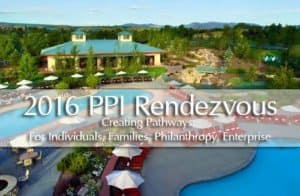Last weekend at the Bowen Center spring conference there was plenty of food for thought, as expected, as we talked about family systems and how they also apply in other organisations. (See A Systematic Business Family?)
There was also lots of fascinating scientific information presented about collective behaviour in the animal kingdom, and we learned some surprising things about how schools of fish and groups of locusts work together, subconsciously, to move about en masse.
Wait, am I saying that human families work the same way as fish and locusts do? Well, not exactly. But I’m not saying that we’re completely different either.
Family vs Other Groups
It’s also really interesting to think about how a family group is similar to and different from other types of human groups. Things we learn in the family realm are used in other circumstances, and things from other groups of people are used in our families.
There are more similarities than most of us realize and the same goes for animals and humans. We’re obviously the most advanced species, but our evolution surely followed many similar paths.
Leadership and Decision-Making
But how do groups of people and animals make their decisions, especially those that affect a group?
Leadership has been written about ad nauseum and there’s little doubt that it’s important to the success of groups. One thing that I’m starting to notice more is that the singular leader is becoming less of a phenomenon, and group leadership is getting trendier.
Authoritative and dictatorial styles are giving way to collaborative and consensual ways of leading. (See: Is Your Family “In Line”, or Aligned?) And what better area to look at these benefits than family business and intergenerational wealth transitions.
Family Business and the 3 Circles
The Three Circle Model has been around for over 3 decades now and while some find it too simplistic, I’m still a huge fan. (See: Three Circles + Seven Sectors = One A-Ha Moment )
Each of the circles, Family, Business, and Ownership, are separate, yet overlapping, systems. By “system” here, I am referring to a group of interrelated people.
In a first generation family business, there’s usually lots of overlap and having circles with the exact same group of people is a real possibility. Even then, it’s important to make family decisions as a family, for the family, and business decisions for the business, as a business.
If you’re lucky enough to transfer the business and wealth to subsequent generations, things invariably get more complex. The family will usually continue to grow, and the business may grow even faster, especially by adding non-family employees.
System = Group of Related People
But you still have three systems, or groups of related people. Some will have formal leadership positions, with titles and clear roles; others, well, not so much. But why not?
In order to make decisions, a business has a CEO and an organisation chart, and formal roles and procedures. Should it be the only circle like that?
If there’s an ownership group, or system, shouldn’t it, too, have a formal structure, along with decision-making bodies and procedures? A shareholders agreement should contain most of this information, but is it actually ever used, and do the owners know what’s in it?
Last, and certainly NOT least, is the family. Talk about a potentially thorny group, and likely the circle with the least formal structure and rules. But decisions still need to be made.
All in the Family
So if a business is run based on some sort of formalized hierarchy and procedures, and an ownership system is subject to a shareholders agreement, then at least some governance exists for these interrelated groups of people in the family business realm.
Is there a good reason why the Family should be the exception?
Question:
Do families really go through the trouble of working this stuff out, “just for family issues?”
Answer:
Only the ones that care about their legacy and want to make sure that all of their hard work doesn’t end up being for naught.
Bottom Line:
Family Business is complex stuff, and “formality is your friend” when you want to ensure that that the transition to the next generation will be successful, because decisions will always need to be made.
Next week in Part 2, we’ll look specifically at the Family circle and take this to another level, literally, with “Who Gets to Decide Who Gets to Decide?”






